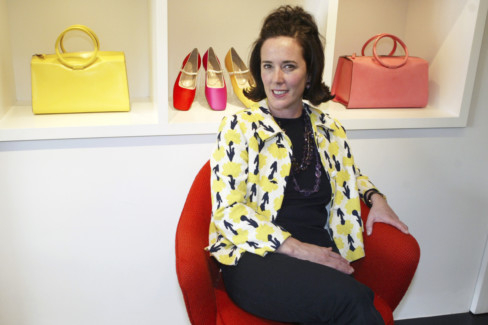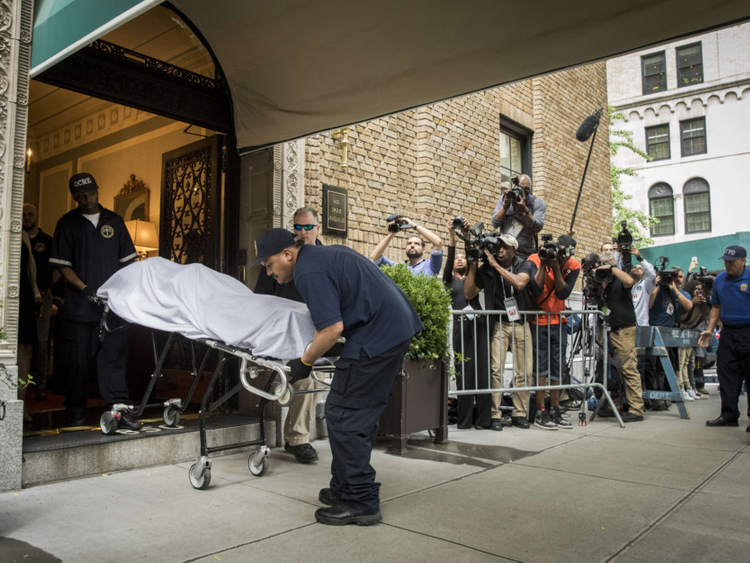
Looking for a pursuit — and a purse — that could hold her attention, Kate Brosnahan left her job at Mademoiselle magazine, cashed out her 401(k) and started making mock-up designs out of paper cutouts and Scotch tape with the help of her boyfriend.
In 1993, armed with a handful of boxy but stylish totes and a brand name that came from melding her first name with her then-boyfriend’s last name, the Kate Spade bag made its debut in an accessories show booth at New York’s Javits Center.
According to an oft-repeated story about the brand’s origins, the night before her second accessories show, she ripped the logo tags out of the sample bags’ interiors and sewed them on the outside in an effort to make her wares stand out. It worked, and helped propel a simple assortment of boxy $155 (Dh569.23) nylon totes into a multimillion-dollar, multi-category lifestyle brand that included footwear, apparel, stationery, fragrance, small leather goods and home goods sold in stores around the globe. Her boyfriend, Andy Spade, became her business partner, and when they wed in 1994, the brand name became her name.
More than a decade divorced from the brand that came to symbolise accessible luxury for a generation of young women in the 1990s, Kate Spade was found dead at her Manhattan home Tuesday at age 55. She reportedly committed suicide by hanging, police officials said.
Also read: Suicide prevention resources in the UAE
The fashion world embraced Spade and her brand early on. The Council of Fashion Designers of America, CFDA, bestowed the Perry Ellis Award for new fashion talent on her in 1996 (the same year the brand opened its first store in Manhattan), followed by recognising her as Accessory Designer of the Year in 1998.
Thanks to both its visible logo and the career arc of its visible namesake, the preppy/chic/not-so-serious Kate Spade label became the aspirational brand of choice for women stepping out into the working world of the mid-1990s.
She pioneered the penchant for designer purses that cost $200 to $600 instead of thousands of dollars, with the label notching annual sales of $1.5 million in 1995 — barely two years after selling its first bags at Barneys New York. By 1998, annual sales were $27 million.
The brand seemed to carve out an unusually wide customer base. Gwyneth Paltrow, Chelsea Clinton and Nicole Kidman carried her bags; Mindy Kaling professed her love of the brand’s cheery, colourful clothes. She helped design a White House keepsake handbag with former first lady Laura Bush. And her death was noted in a tweet by Ivanka Trump.
In 2006, apparel firm Liz Claiborne Inc. not only bought the brand from Neiman Marcus, it eventually did the corporate version of ripping the tag from the inside of the bag and slapping it on the outside by changing the company name to Kate Spade as well. (Fiscal net sales for 2006 were reportedly $84 million.) The husband-and-wife founders remained as consultants for a year, exiting the company altogether in 2007. (The same year Claiborne’s namesake founder also died.)
“She had a tremendous reputation and was very well known for a variety of high-quality products,” said Ronald Friedman, co-head of the retail practice at Marcum, an accounting and advisory firm. Spade also “was at the top of her profession as far as reputation is concerned,” Friedman said. “Whether it’s Gucci or Kate Spade, it’s prestige when you have their property.”
Team Spade was hardly off the fashion radar for the last decade, though. Husband Andy dabbled in the space with his Jack Spade brand for men (which was part of Kate Spade & Co.) and with the marketing and branding firm Partners & Spade, which launched a line of loungewear, Sleepy Jones, in 2013. In 2016, Kate re-entered the fashion fray with the launch of accessory label Frances Valentine. That year she also announced that she had changed her name to Kate Valentine, putting distance between herself and the original label she started.
A statement posted to the CFDA’s website said it was “devastated to hear the news of our friend, colleague, and CFDA member Kate Spade’s tragic passing. She was a great talent who had an immeasurable impact on American fashion and the way the world viewed American accessories.” The statement also said the CFDA wanted “to honour her life and her major contribution to the fashion business and express our most sincere condolences to the family.”
Spade is survived by husband Andy Spade and 13-year-old daughter Frances Beatrix Spade.













